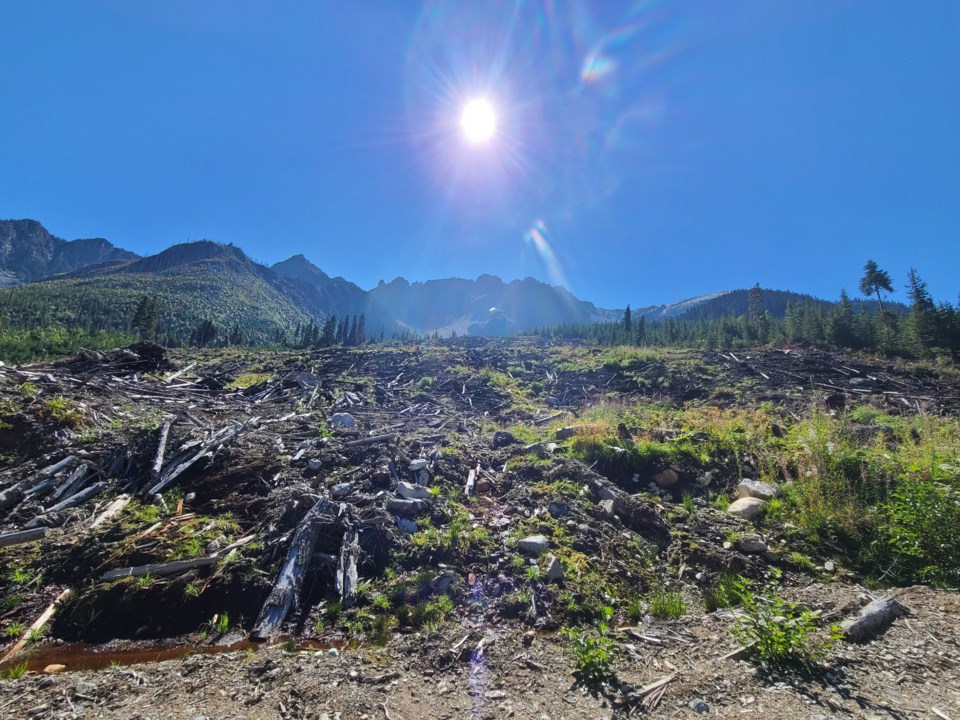A cultural burn in the upper Tenquille Creek drainage area at the start of the summer will enhance biodiversity, stimulate berry production, improve wildlife habitat, and reduce wildfire risk according to Lil’wat Forestry Ventures (LFV). The group, in partnership with BC Wildfire Service (BCWS), completed the burn by the end of June.
Klay Tindall, general manager of forest operations for LFV, explained the purpose of a cultural burn.
“A cultural burn is essentially putting fire back into the landscape, often in a forested or previously forested area, with the purpose of enhancing and preserving cultural values,” he said. “These fires require extensive planning, sometimes months in advance, and must be managed carefully to ensure they do not negatively impact community members.”
The cultural burn occurred over 14.6 hectares of previously harvested cut blocks. According to Tindall, grizzly bear habitats and traditional plant growth in this area were severely impacted in the past due to wildfires, compounded by human intervention through fire suppression in the area for many decades.
He said LFV’s aim was to bring back resources that will benefit the community and local wildlife.
“Our goal was to preserve the area in a way that promotes the regrowth of important resources for the benefit of the Lil’wat Nation,” said Tindall. “By reintroducing fire to stimulate huckleberry growth, we can support the grizzly bear population while also providing community members with more opportunities to harvest these traditional plants.”
Increasing the huckleberry supply at higher elevations will also encourage bears to stay in the area instead of moving down into nearby communities. Tindall believes the cultural burn will reduce bear sightings in valley bottoms and near schools in Whistler.
BCWS also played a crucial role in the cultural burn. It provided funding support for the project and assisted with the shared burn plan. The province’s wildfire service was on site to apply the fire and monitor the burn to ensure it did not impact locals.
Tindall said LFV has collaborated with the BC Wildfire Service for a decade, with many of their staff being members of the Lil’wat Nation.
“This is not the first time we have collaborated with them on Lil’wat Nation traditional territory either,” he said. “In 2022, we worked together on a prescribed burn project in the Owl Creek Drainage, nine kilometres north of Pemberton. That project had similar intended outcomes as the Tenquille Creek one.”
LFV has been learning year on year, particularly regarding the importance of pre-planning for cultural burns. Tindall said weather is a crucial factor when it comes to ensuring a burn stays manageable.
“The pre-planning process involves ensuring there is good road access to facilitate worker safety, and that all plans are in place ahead of time so the work can be done when weather conditions are suitable for burning,” he said.




